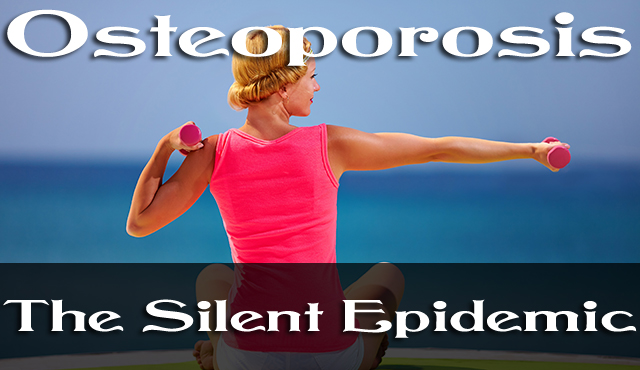
Most women aren’t aware that osteoporosis is a silent condition that can accelerate after menopause and can cause back pain, curvature of the spine, and loss of height. In worse cases, it can cause hip or vertebral fracture, that can lead to limited mobility, pneumonia and even death. Women can be predisposed to osteoporosis due to genetic factors. For instance, women from European descent with fair skin, small frame and light eye and hair color are more prone to this condition. In addition, factors such as low body weight, Vitamin D and Calcium deficiency, the presence of certain medical conditions, such as thyroid disease, and the use of certain medications, such as Prednisone, may also increase the probability of osteoporosis. Certain life style habits like the lack of weight bearing exercise, excessive alcohol intake, and smoking are also risk factors.
Osteoporosis may already be present prior to menopause, but bone loss increases for the first 10 years after menopause, which occurs at an average age of 51 for most women, therefore; we recommend that women get a baseline bone density study once they have ceased to menstruate for a period of one year. If a woman has thinning bones or osteopenia, a precursor to osteoporosis, we perform a risk assessment and discuss lifestyle factors that can reduce her risk of progressive bone loss. If she already has osteoporosis, we immediately start treatment with a bisphosphonate and if she complies with this treatment, her osteoporosis often reverts to normal bone density. At the very least, we are able to stop any further bone loss.
A bone density study will yield a “T” score, used to gauge the presence of this condition. Also, at the time that we perform a bone density study, we calculate the patient’s FRAX Score. The FRAX Score was developed by the World Health Organization to assess the various factors that may predispose someone to fracture even if he/she DOES NOT have osteoporosis. The FRAX Score was necessary because statistics show that some patients may incur fractures even when their “T” scores are greater than -2.5, which is he cut off for osteoporosis. If your FRAX Score shows an overall fracture risk of greater than 21% or a hip fracture risk of > 3%, then you should be treated for osteoporosis regardless of your “T” score.
Some patients cannot take bisphosphonates once per week or once per month because they experience severe gastroesophageal reflux. In these cases, there are other treatments available including a yearly intravenous infusion of the drug Reclast or an injection every 6 months of the drug Prolia. There are also other drugs and medications currently under development.
Osteoporosis surveillance is an important aspect of mid-life care. To maximize your bone health now, do weight bearing exercises 45 minutes to one hour most days, take Calcium and Vitamin D (amount of Calcium depends on daily dietary intake) and discuss other risk factors you may have with your doctor.

Comments (1)
Do you give the reclast if, have Medicare/tricare